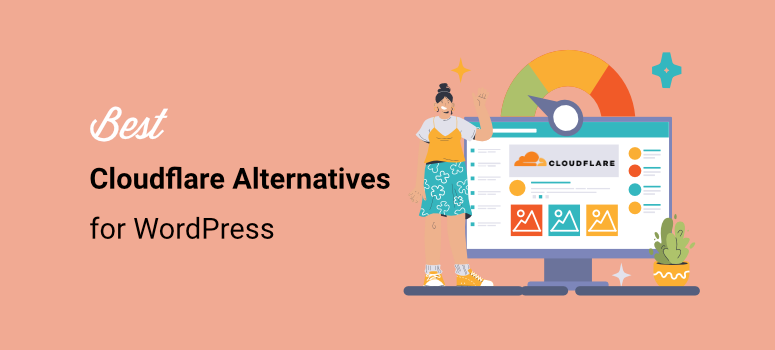
I love Cloudflare. It’s on most of my WordPress sites.
But the reality is, not every site needs the same CDN solution. Some clients need stronger security, others want simpler pricing, while a few just need something easier to set up.
That’s when I started testing Cloudflare alternatives. And I found some great options!
The right CDN can speed up your WordPress site by serving content from servers close to your visitors.
But picking one shouldn’t take hours of research. This guide shows you 5 top alternatives to Cloudflare, plus one bonus option. Each works well for different needs and budgets.
Whether you want free unlimited bandwidth, built-in security, or just the easiest setup possible, there’s a CDN here that fits
Key Takeaways:
- Free CDNs can work for small businesses
- Security features matter more than pure speed
- Pay-as-you-go pricing beats surprise monthly bills
- Avoid technical CDNs without developer help
- Image-only CDNs exist for simpler needs
How I Evaluate CDNs for WordPress
Testing CDNs isn’t about fancy benchmarks. It’s about what actually matters when you’re running a WordPress site.
Here’s what I look at:
- Set up ease – Can a beginner install this without calling a developer? Some CDNs need just a plugin. Others require nameserver changes or complex account setups.
- Pricing clarity – Will you get surprise bills? I check if costs are predictable. For example, usage-based pricing sounds good until you don’t know what you’ll pay each month.
- Speed improvements – Does it actually make sites faster? I look at real metrics like Time to First Byte and page load times. Not just marketing claims.
- WordPress compatibility – Does it work smoothly with popular plugins like WooCommerce and WordPress caching tools? Or does it cause conflicts that break your site?
- Support quality – Can you get help when stuck? Free plans often mean community forums only. Paid plans should include real support from people who know WordPress.
These five things tell you if a CDN will work for your site. Not server counts or technical specs that don’t matter to beginners.
Why Trust IsItWP?
At IsItWP, we’ve been the WordPress community’s go-to resource since 2009, helping over 2 million users choose better WordPress tools.
Unlike review sites that never actually use the products, we maintain active accounts, test real features, and provide ongoing WordPress consultation to small businesses.
We don’t just read spec sheets; we look at what each CDN actually does for WordPress sites.
That means testing performance, checking compatibility with popular plugins, and seeing how beginners handle the setup process.
Our goal is simple: help you pick the right CDN without wasting time or money on the wrong choice.
Cloudflare Alternatives for WordPress
Before we dive into details, here’s how these CDNs stack up against Cloudflare.
You can use the comparison table below to check out pricing, if it has a free version, ease of use, and what it is best for.
| Name | Best For | Setup Difficulty | Free Version? | Starting Price |
|---|---|---|---|---|
| 🥇 Cloudflare | Best free option overall | Moderate | ✅ Yes | Starting at $20/month |
| 🥉 Sucuri | Security-focused sites | Easy | ✅ Yes | Starts at $229/year |
| 🥈 BunnyCDN | Growing sites on budget | Moderate | ❌ No | Starts at $0.01/GB |
| 4. KeyCDN | Predictable pay-per-use | Moderate | ❌ No | Starting at $0.04/GB |
| 5. Google Cloud CDN | Enterprise sites with developers | Technical | ❌ No | Starts at $0.08/GB |
| 6. Amazon CloudFront | AWS ecosystem users | Technical | ✅ Yes (Only First 1TB) | Starts at $0.085/GB |
Plus, if you want to skip to any WordPress CDN tool with the table of contents below.
With that out of the way, let us begin!
1. Cloudflare ⭐⭐⭐⭐⭐
330+ global locations | Best for: Sites needing free unlimited bandwidth
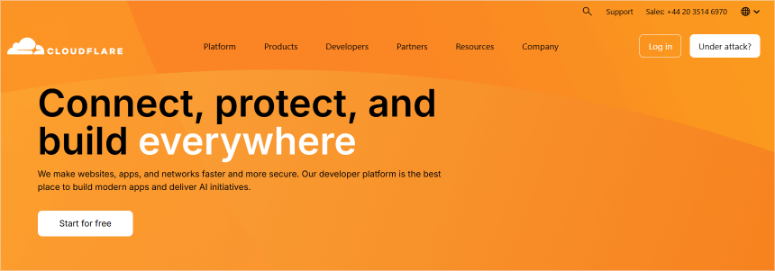
Cloudflare is the CDN everyone compares against.
As mentioned, it is my go-to choice because it offers something no other CDN does: truly unlimited bandwidth on a free plan. That’s huge for small businesses watching every dollar.
My Experience
I like how the setup takes about 20-30 minutes with three main steps. You create an account, change your nameservers, and install the WordPress plugin.
I should point out that the nameserver change can be tricky for some beginners, but Cloudflare gives you the exact addresses to copy and paste.
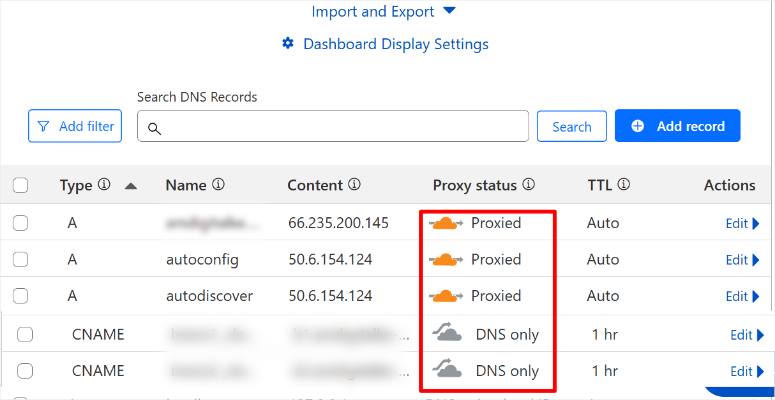
You can also go through my tutorial on how to set up Cloudflare for a step-by-step process.
What makes Cloudflare special is APO (Automatic Platform Optimization).
Instead of just caching images and CSS files like traditional CDNs, APO caches your complete HTML pages at 330+ edge locations worldwide.
So, a visitor in Tokyo gets your page from a nearby server while someone in London or New York.
The results are real. Sites see a significant improvement in response speed (Time to First Byte), and it displays content sooner (First Contentful Paint).
Plus, the WordPress Cloudflare plugin makes management easy.
You can purge cache with one click, adjust security levels, and toggle development mode right from your WordPress dashboard. No need to log into a separate platform every time you update content.
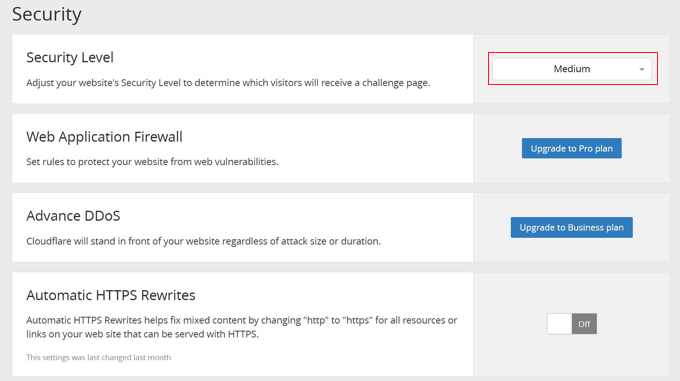
The free plan gives you 3 page rules.
This lets you decide how Cloudflare handles caching on different parts of your site. For example, you can choose to cache your homepage longer or skip caching for your admin area.
It’s a simple way to control how your site loads for visitors and improve speed where it matters most.
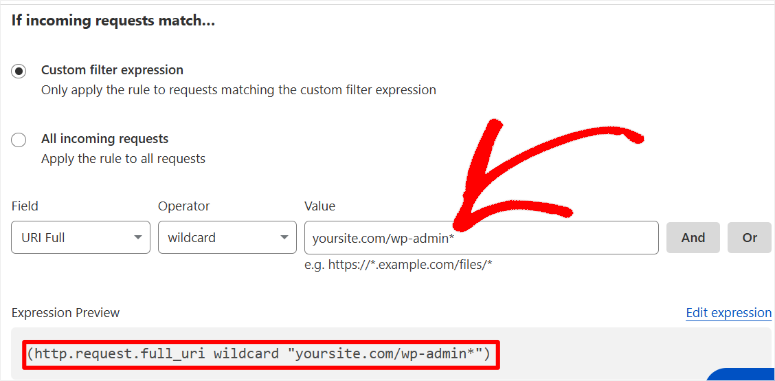
On top of that, you get free SSL certificates, basic DDoS protection, and fast DNS management.
►Pros
- Truly unlimited bandwidth on free tier (no other CDN matches this)
- Simple WordPress plugin for one-click management
- Built-in security with DDoS protection and optional WAF
- Month-to-month pricing with no long-term contracts
►Cons
- Requires nameserver change (can’t use just CNAME records)
- Full HTML caching costs an extra $5/month for the best performance on free plan
- Dashboard has many settings that can overwhelm beginners
My Verdict
Start with Cloudflare if you want a free CDN with unlimited bandwidth. Add the $5/month APO (full HTML caching) if your budget allows for maximum speed.
It’s the best starting point for most WordPress sites, especially if you’re on a tight budget.
Pricing: Free forever. Starts at $20/month.
2. Sucuri ⭐⭐⭐⭐⭐
700,000+ active plugin installs | Best for: Security-conscious site owners
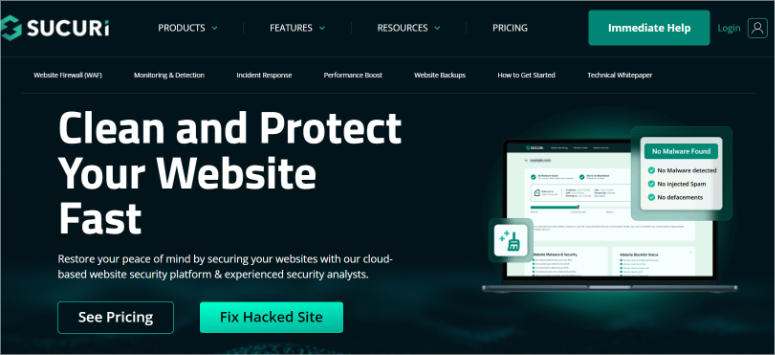
Sucuri takes a different approach than most CDNs.
While others focus purely on speed, Sucuri puts security first. This matters if your site handles customer data, deals with constant hack attempts, or processes payments.
My Experience
The Sucuri free plugin installs in under 5 minutes from the WordPress plugin directory.
You get instant security scanning and one-click hardening buttons that improve protection without any technical knowledge.
But the real power comes from Sucuri’s Web Application Firewall (WAF).
WAF sits between your site and visitors, blocking attacks before they reach your server. It shields your website from hackers trying to steal data or take control.
On top of that, Sucuri offers malware scanning, removal services, and post-hack cleanup. If your site gets compromised, their security team steps in to fix it. That’s included in your plan, not charged separately.
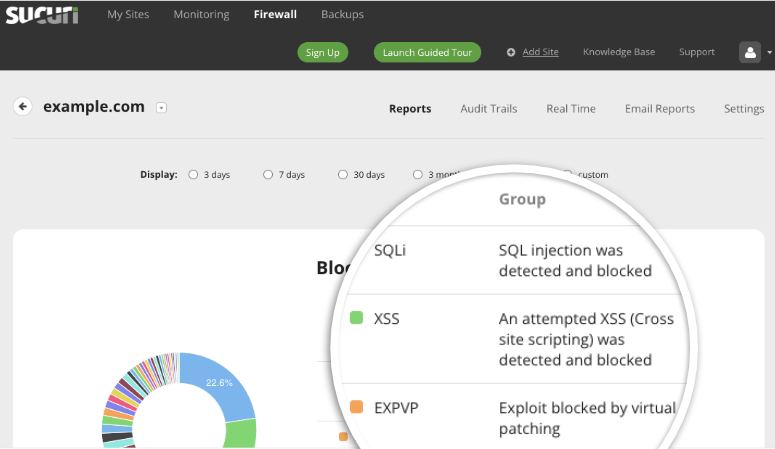
This works great with the CDN, speeding up your site too.
It has a worldwide system that absorbs heavy traffic and keeps your site running smoothly during attacks.
Virtual patching is another standout feature. When WordPress or your plugins have security vulnerabilities, Sucuri patches them at the firewall level while you update the actual code.
Your site stays protected during that critical window.
Plus, you get detailed security reports showing blocked attacks, bandwidth usage, and threat patterns. It helps you understand what’s targeting your site.
►Pros
- Security-focused with WAF included in paid plans
- Free plugin available for basic security scanning
- Post-hack cleanup service included (saves thousands in emergency fixes)
- Easy one-click hardening features for beginners
►Cons
- Paid plans required for CDN and firewall features
- Overkill if you only need speed improvements
- Requires nameserver change for full firewall protection
My Verdict
Choose Sucuri when security matters more than just speed. It’s perfect for eCommerce sites, membership communities, or any site that can’t afford downtime from attacks. The price is higher, but the included security features and cleanup services justify the cost.
Pricing: Free plugin available. Starts at $229/year.
Check my detailed Sucuri review here.
Plus, you can see how the number one and number two CDNs go head-to-head in my comparison article on Sucuri vs. SiteLock vs. CloudFlare.
3. BunnyCDN ⭐⭐⭐⭐⭐
114 global locations | Best for: Budget-conscious growing sites

BunnyCDN offers complete pricing transparency that won’t surprise you at the end of the month. You pay only for what you use, with costs as low as $0.01 per gigabyte.
My Experience
Setup is a little different from other CDNs on this list. This is because BunnyCDN requires a caching plugin like W3 Total Cache or WP Rocket since BunnyCDN doesn’t have its own WordPress plugin.
Once connected, it handles all your static files through 114 locations worldwide.
What stands out is Perma-Cache.
This feature keeps your content cached permanently at edge locations until you manually purge it.
This eliminates the delay regular CDNs face of expired cache after set periods, forcing visitors to wait for fresh copies.
BunnyCDN includes advanced features at all price levels. HTTP/3 support speeds up connections. Brotli compression reduces file sizes better than regular gzip.
Plus, image optimization automatically converts and resizes images based on device type.
The real-time analytics dashboard shows exactly what you’re using and paying for. No guessing about next month’s bill. You see bandwidth by region, popular files, and cache hit rates.
On top of that, BunnyCDN offers video streaming capabilities and storage zones if you need them. Most small businesses won’t, but they’re there at the same transparent per-GB rates.
►Pros
- Extremely affordable pay-as-you-go pricing (starts at $1/month)
- Transparent billing with no surprise overage fees
- Advanced features included (HTTP/3, Brotli, image optimization)
- Detailed real-time analytics show exactly what you’re paying for
►Cons
- Requires separate caching plugin like WP Rocket or W3 Total Cache
- Less beginner-friendly than all-in-one solutions
- Pricing can be confusing for complete beginners unfamiliar with bandwidth usage
My Verdict
BunnyCDN is the best value if you want professional CDN features without breaking the bank. It works great for growing sites that need predictable costs and don’t mind using a separate caching plugin.
Pricing: Starts at $0.01/GB. $1/month minimum.
4. KeyCDN ⭐⭐⭐⭐
Pay-as-you-grow pricing, 150+ locations | Best for: Predictable monthly usage
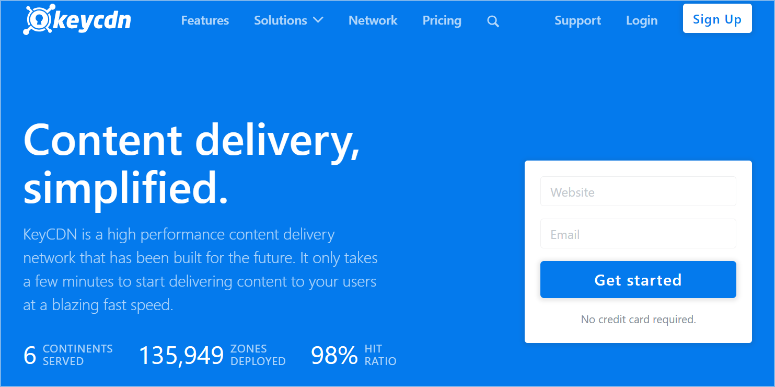
KeyCDN sits between the free options and technical enterprise solutions. It offers straightforward per-gigabyte pricing with a credit system that keeps costs predictable.
My Experience
Setup requires purchasing $4 in credits upfront. This acts as your initial payment, then you use those credits as bandwidth gets consumed. Once depleted, you add more credits starting from $4.
Like with BunnyCDN, WordPress integration works through WordPress plugins like CDN Enabler or W3 Total Cache.
But the setup is straightforward.
All you have to do is create a pull zone in KeyCDN’s dashboard, connect this CDN tool to your WordPress site, and the CDN starts serving your static files through 150+ global edge locations.
What makes KeyCDN appealing is the simple per gigabyte pricing structure. A site using 500GB monthly pays $20. Using 1TB costs $40. No complex pricing tiers or regional variations to calculate.
Free SSL certificates come via Let’s Encrypt integration. Plus, HTTP/2 and Brotli compression are included at all usage levels. As a result, you’re not paying extra for modern protocols that speed up your site.
The dashboard provides real-time cache purging and detailed statistics. You see exactly which files are cached, bandwidth usage by location, and cache hit ratios.
This transparency helps you understand what you’re paying for.
I like how KeyCDN also offers instant purging when you update content. Unlike some CDNs with 5-10 minute delays, changes appear immediately across all edge locations.
►Pros
- Clear $0.04/GB pricing structure (no surprise bills)
- Good global coverage with 150+ edge locations
- Free SSL certificates and modern protocols included
- Real-time analytics and instant cache control
►Cons
- $4 minimum upfront credit required (barrier for tiny sites)
- Not as beginner-friendly as all-in-one solutions
- Credit system may confuse beginners unfamiliar with prepayment
My Verdict
KeyCDN works well if you want predictable pay-per-use pricing and don’t mind upfront investment. It’s a good middle option between free CDNs and complex enterprise solutions.
Pricing: Starting at $0.04/GB, $4 minimum credit.
5. Google Cloud CDN ⭐⭐⭐⭐
Integrated with Google Cloud Platform | Best for: Sites already on Google Cloud
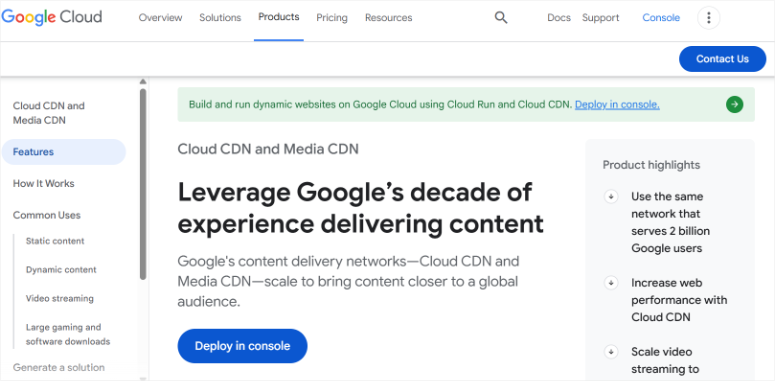
Google Cloud CDN is powerful and works on the Google Cloud infrastructure which many businesses already use. You might want to maintain your frameworks. This is a big reason why it is on this list.
But let’s be clear up front: this is not for beginners. Apart from needing a Google Cloud Platform account, it requires technical knowledge most small businesses don’t have.
My Experience
As mentioned, setup requires understanding of load balancers, backend services, configurations, and managing SSL certificates manually. Plus, there’s no simple WordPress plugin.
The power comes from Google’s massive global infrastructure.
Your content sits on the same network that serves YouTube and Gmail. That’s 130+ edge locations with direct connections to major internet service providers worldwide.
Cloud Armor provides enterprise-level DDoS protection and custom security rules. You can block traffic by geography, create rate limiting rules, and filter requests based on complex conditions.
The CDN integrates deeply with other Google Cloud services. If you’re already using Google Cloud Storage, Compute Engine, or Kubernetes, the CDN connects seamlessly. It’s built for that ecosystem.
Pricing is usage-based with no minimum charges. You pay for bandwidth, HTTP/HTTPS requests, and cache invalidation requests.
►Pros
- Powerful Google infrastructure (same network as YouTube)
- Excellent if already using Google Cloud Platform services
- Advanced security with Cloud Armor DDoS protection
- Highly customizable for technical users with specific needs
►Cons
- NOT beginner-friendly (this is critical)
- Requires Google Cloud Platform account and technical knowledge
- Complex pricing structure with multiple cost factors
- No simple WordPress integration or plugin available
My Verdict
Honestly, skip Google Cloud CDN unless you have technical staff or developers on your team. The power and flexibility don’t matter if you can’t set it up properly. Stick with beginner-friendly options like Cloudflare or BunnyCDN instead.
Pricing: Starts at $0.08/GB. Usage-based pricing.
6. Amazon CloudFront ⭐⭐⭐
Amazon’s 450+ edge locations | Best for: AWS ecosystem users
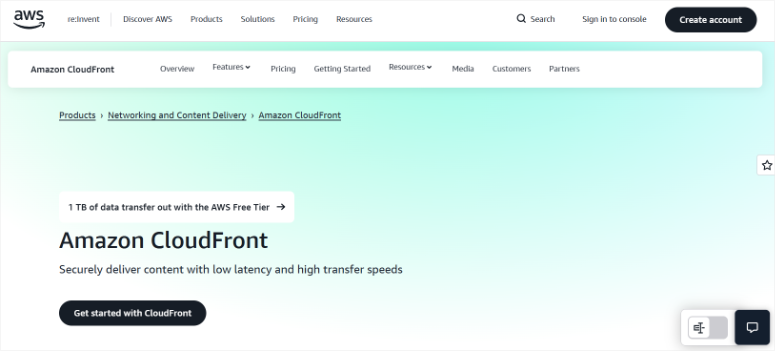
Amazon CloudFront offers massive scale with 450+ edge locations. This is the reason it is on this list. But like Google Cloud CDN, it’s built for developers, not beginners.
You need AWS experience to use it properly.
My Experience
Setup requires an AWS account and understanding of distributions, origins, and cache behaviors.
CloudFront uses AWS-specific terminology that confuses beginners and does not have a WordPress plugin that simplifies the process.
The network is impressive.
CloudFront connects to Amazon’s global network of servers. If you’re already hosting on AWS or using S3 for storage, CloudFront integrates seamlessly.
AWS Shield provides DDoS protection automatically on all CloudFront distributions. The service absorbs attacks before they reach your origin server.
Plus, you can upgrade to Shield Advanced for enhanced protection and 24/7 response team support.
Apart from that, Lambda@Edge lets you run custom code at edge locations. This means you can modify requests and responses, personalize content, or authenticate users without hitting your origin server.
But you need coding skills to use it.
►Pros
- Massive 450+ location network (one of the largest)
- Perfect if already using AWS services like S3 or EC2
- AWS Shield DDoS protection included automatically
- Highly scalable for traffic spikes and growth
►Cons
- NOT for beginners (critical limitation)
- Complex AWS console and setup process
- Confusing pricing with multiple cost factors
- Requires technical expertise to configure properly
My Verdict
Only consider Amazon CloudFront if you have AWS developers or a technical team managing your infrastructure. Like with Google Cloud CDN, the massive network doesn’t help if you can’t set it up correctly.
Beginners should choose simpler options like Cloudflare or BunnyCDN.
Pricing: Free for the first 1TB. Starts at $0.085/GB. Usage-based pricing.
Bonus: Envira CDN – Image Specific CDN
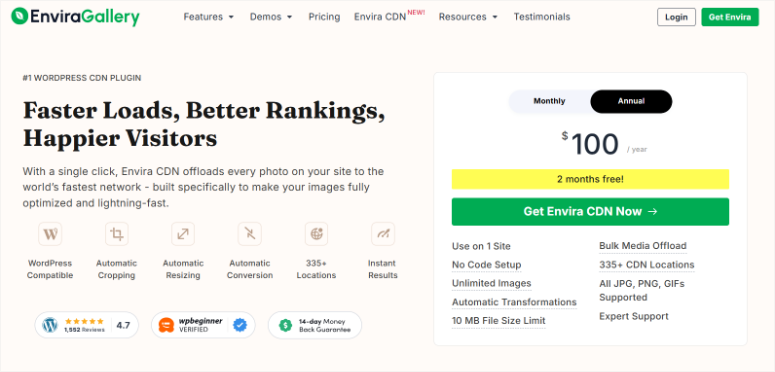
Why include an image-only CDN? Because images are the biggest culprit behind slow WordPress sites. Most beginners don’t need to accelerate every file. They just need faster image loading.
Envira CDN launched in 2025 by the Envira Gallery team. Setup takes two minutes. All you have to do is install the plugin, flip one switch, and you’re done. No nameserver changes. No technical configurations.
It uses 335+ global locations and costs $10/month. As a result, it is perfect for photographers, bloggers, and small businesses with lots of images.
The limitation? It only handles images (PNG, JPG, GIF). CSS and JavaScript files aren’t included. But for most beginners, faster images solve 80% of their speed problems.
Check out my Envira Gallery review for more details.
That concludes my list of the best Cloudflare alternatives. Now, let me help you select the one that makes most sense for your business.
Which CDN Should You Choose?
Picking the right CDN comes down to three things: your budget, your technical comfort level, and what you need most.
- If you want free unlimited bandwidth: Start with Cloudflare’s free plan. Then, upgrade if your budget allows for maximum speed.
- If security is your main concern: Choose Sucuri because the Web Application Firewall blocks attacks before they reach your site.
- If you want best value for growing sites: BunnyCDN gives professional features at budget prices. Pay only for what you use with transparent per-GB rates.
- If you only need image CDN and easy setup: Envira CDN is the simplest option available. Literally one toggle switch in WordPress. But remember it only handles images, not full site acceleration.
- If you need predictable pay-per-use: KeyCDN credit offers straightforward pricing. Good middle ground between free options and enterprise solutions.
- Avoid if you’re a beginner: Google Cloud CDN and Amazon CloudFront require technical expertise most small businesses don’t have. But are powerful with large global networks other CDNs find hard to compete with.
Now that we have listed the best Cloudflare alternatives and you understand how to pick one according to your needs, you are all set! If anything is unclear, check out the commonly asked questions below.
FAQs: Cloudflare Alternatives for WordPress
What is a CDN and why do I need one?
A CDN (Content Delivery Network) stores copies of your site on servers worldwide. When someone visits your site, they get content from the nearest server instead of your main hosting. This makes pages load faster, especially for visitors far from your hosting location.
Will a CDN actually make my WordPress site faster?
Yes. Real results show significant improvements. Cloudflare users see 72% faster loading (Time to First Byte) on average. The biggest speed gains happen on image-heavy sites and when you have global audiences. Visitors in Asia loading from a North American server will notice dramatic improvements.
Do I need to be technical to set up a CDN?
It depends which one you choose. Cloudflare and Sucuri are beginner-friendly with WordPress plugins and simple setup guides. Envira CDN is even easier with just one toggle switch. Google Cloud CDN and Amazon CloudFront require technical knowledge, even though they are very powerful.
Can I use a free CDN for my business site?
Absolutely. Cloudflare’s free plan works great for small businesses with unlimited bandwidth and basic security. Consider upgrading to paid plans for better performance features like full HTML caching and Web Application Firewall protection as your business grows.
What’s the difference between a CDN and hosting?
Your website hosting stores your actual WordPress site and database. A CDN delivers copies of static files like images, CSS, and JavaScript from servers closer to visitors. You need both; hosting runs your site while the CDN makes it load faster. They work together, not as replacements.
Will changing CDNs break my site?
No, if you follow the setup instructions carefully. Most CDNs offer migration help or detailed guides. The key is testing after setup and clearing all caches. Start with a staging site if you’re nervous. You can always disable the CDN and revert if something goes wrong.
Should I Pick a Cloudflare Alternative?
Cloudflare works great for most WordPress sites. But it’s not always the perfect fit.
Sometimes you need stronger security than Cloudflare’s free plan offers. Or you’re tired of guessing what your monthly bill will be.
Other times, Cloudflare feels too complicated. Too many settings. Too many decisions. You just want something that works without the learning curve.
The alternatives exist for these exact situations. When Cloudflare doesn’t quite match what you need, there’s likely a better option waiting.
That’s why this guide exists. Each CDN solves specific problems better than others. Pick the one that fixes your biggest headache right now. Start there and see how it performs.
The good news? Switching CDNs is easier than you think. Your content stays safe. Your site keeps running. You’re just changing how files get delivered.
Now to improve your site beyond CDNs, I have created a detailed WordPress performance checklist. It will only take you 35 minutes to go through the entire list.
Plus here are other performance related posts you will be interested in.
- 10 Best CDN Services to Speed Up Your Website
- 10 Best Speed Optimization Plugins for WordPress
- 8 Best WordPress Maintenance Services and Plans
- 10 Top WordPress Plugins to Make Your Site Mobile Friendly
These resources build on what you learned here about CDN performance. Combined with the right CDN choice, they’ll transform your WordPress site speed completely.

Comments Leave a Reply